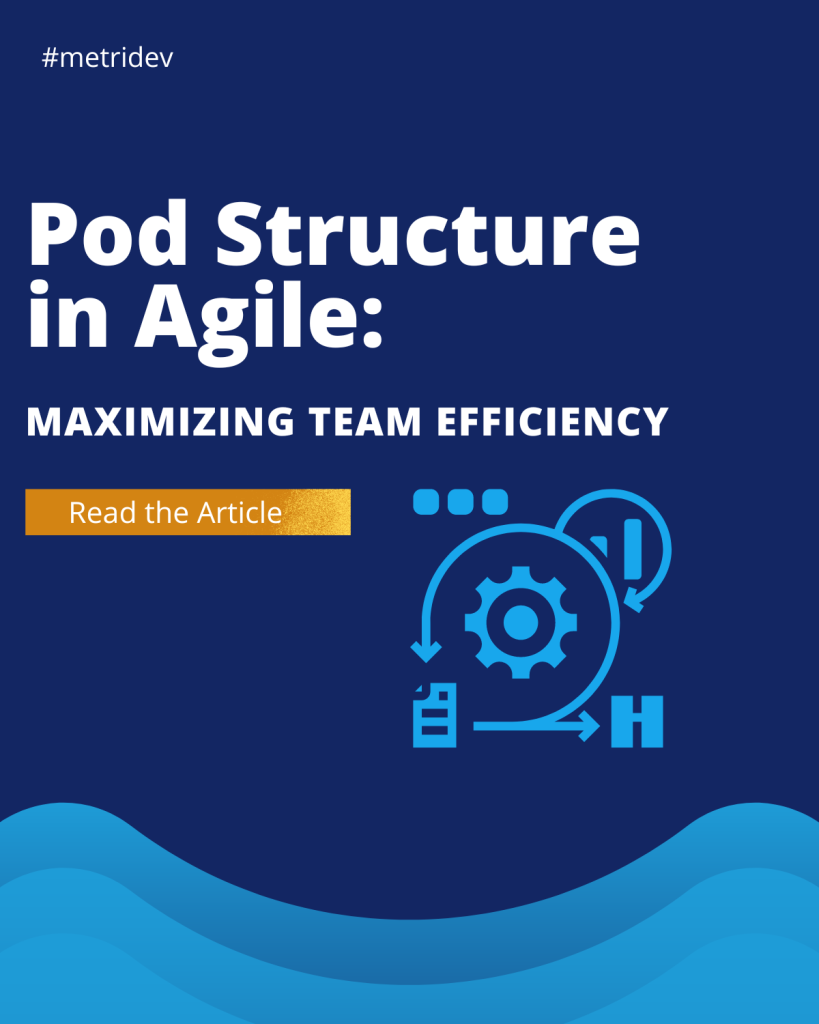Introduction
In today’s fast-paced business landscape, organizations are constantly seeking ways to drive growth, improve efficiency, and stay ahead of the competition. One increasingly popular approach is the adoption of a “metric-driven environment” – a strategic framework that places data-driven decision-making at the forefront of operations.
This article will explore the key elements of a metric-driven environment, its importance, and the steps organizations can take to successfully implement and leverage this powerful approach to achieve their desired results.
What is a Metric Driven Environment?
A metric-driven environment is a management philosophy that emphasizes the use of quantifiable data and key performance indicators (KPIs) to guide decision-making, set goals, and measure progress. Instead of relying solely on intuition or subjective assessments, a metric-driven approach relies on a comprehensive system of metrics that provide a clear, data-backed understanding of an organization’s performance and areas for improvement.
At the heart of a metric-driven environment is the belief that what gets measured, gets managed. By identifying and tracking the right set of metrics, organizations can gain valuable insights into their operations, customer behavior, and overall business health, enabling them to make more informed, data-driven decisions.
Why a Metric-Driven Approach is Important
- Improved Decision-Making: By basing decisions on objective data rather than gut feelings or anecdotal evidence, organizations can reduce the risk of making suboptimal choices and increase the likelihood of achieving their desired outcomes.
- Enhanced Accountability: Metrics provide a clear and measurable way to track progress. Also to identify areas for improvement, and hold teams and individuals accountable for their performance.
- Increased Efficiency: A metric-driven approach can help organizations streamline their processes and identify and eliminate waste. Moreover, it can optimize resource allocation, leading to greater overall efficiency and cost savings.
- Competitive Advantage: Organizations that excel at leveraging data and metrics to drive their decision-making and strategy can gain a significant competitive edge over their peers. Particularly in fast-moving or highly competitive industries.
- Continuous Improvement: A metric-driven environment fosters a culture of continuous improvement. Teams and individuals are constantly striving to meet or exceed their performance targets and identify new opportunities for growth and optimization.
Key Metrics to Track in a Metric-Driven Environment
The specific metrics that an organization should track will vary depending on its industry, business model, and strategic objectives. However, some common examples of key metrics in a metric-driven environment include:
- Financial Metrics: Revenue, profit, gross margin, customer acquisition cost, customer lifetime value, etc.
- Customer-Centric Metrics: Customer satisfaction, customer churn, net promoter score, customer retention rate, etc.
- Operational Metrics: Productivity, efficiency, cycle time, error rates, inventory turnover, etc.
- Employee-Focused Metrics: Employee engagement, employee retention, training completion rates, etc.
- Marketing and Sales Metrics: Website traffic, conversion rates, lead generation, sales pipeline, etc.
The key is to identify the metrics that are most closely aligned with the organization’s strategic goals and that provide the most valuable insights into its performance and areas for improvement.
Handling Ambiguity in a Metrics-Driven Environment
One of the challenges of a metric-driven environment is that not all aspects of an organization’s performance can be easily quantified or measured. This can create ambiguity and uncertainty, which can be difficult to navigate. To address this, organizations should define metrics carefully. They should ensure that the metrics being tracked are well-defined, measurable, and aligned with the organization’s strategic objectives. Additionally, it is crucial to combine quantitative and qualitative data by supplementing quantitative metrics with qualitative data. For instance, customer feedback, employee surveys, and industry benchmarks, to gain a more holistic understanding of performance.
Furthermore, organizations should encourage dialogue and collaboration. Thye should foster an environment where teams and individuals feel comfortable discussing the limitations of the metrics and collaborating to find creative solutions to address ambiguity. Finally, it is important to remain flexible and adaptable by regularly reviewing and adjusting the metrics being tracked. This is to ensure they remain relevant and effective as the organization’s needs and priorities evolve. By adopting a balanced and adaptable approach to metrics, organizations can navigate the ambiguity inherent in a metric-driven environment. Also, they will leverage the power of data to drive continuous improvement and success.

Setting Goals and Objectives in a Metric-Driven Environment
In a metric-driven environment, setting clear, measurable goals and objectives is essential for driving progress and achieving desired outcomes. When establishing goals, organizations should first align goals with strategic objectives. This is to ensure they are directly linked to the organization’s overall strategic priorities and vision. Next, make goals specific, measurable, achievable, relevant, and time-bound (SMART) by clearly defining the desired outcomes. Also defining the metrics that will be used to measure progress, and the timeframe for achieving the goals. Additionally, involve employees in the goal-setting process to foster a sense of ownership and accountability. Furthermore, regularly review and adjust goals by continuously monitoring progress. And also being prepared to adapt goals and objectives to changing market conditions or organizational priorities. By setting clear, data-driven goals and objectives, organizations can create a shared sense of purpose, focus their efforts, and measure their success in a meaningful way.
Implementing a Metric-Driven Culture in Your Organization
Transitioning to a metric-driven environment requires more than just the adoption of new tools and technologies. It also necessitates a fundamental shift in an organization’s culture and mindset. To successfully implement a metric-driven culture, organizations should first secure buy-in from leadership. They should ensure that the top leadership is fully committed to the metric-driven approach and willing to champion and model the desired behaviors. Next, provide comprehensive training and support to equip employees with the necessary skills, knowledge, and resources. This will help to effectively use and interpret the relevant metrics.
Additionally, encourage data literacy and analytical thinking by fostering a culture that values data-driven decision-making and critical analysis. And also providing opportunities for employees to develop these skills. Furthermore, celebrate successes and learnings by recognizing and rewarding teams and individuals who demonstrate a commitment to the metric-driven approach. This will create a safe environment for sharing both successes and lessons learned. Finally, continuously evolve and improve by regularly reviewing the organization’s metric-driven practices. Also by identifying areas for improvement, and making necessary adjustments to ensure the approach remains effective and relevant. By prioritizing the development of a metric-driven culture, organizations can create a sustainable, data-driven environment that drives long-term success and growth.
What is the Difference Between Metric-Driven and Data-Driven?
While the terms “metric-driven” and “data-driven” are often used interchangeably, there are some key distinctions between the two approaches:
| Metric-Driven | Data-Driven |
|---|---|
| Focuses on specific, measurable key performance indicators (KPIs) | Utilizes a broader range of data, including both quantitative and qualitative information |
| Emphasizes the use of metrics to guide decision-making and set goals | Emphasizes the use of data to inform decision-making, but may not necessarily have a clear set of defined metrics |
| Typically has a more structured, top-down approach to data management and analysis | Typically has a more flexible, bottom-up approach to data management and analysis |
| Aims to achieve specific, measurable outcomes | Aims to uncover insights and patterns that can inform strategic decision-making |
In practice, the most effective organizations often combine elements of both metric-driven and data-driven approaches. This help to create a comprehensive, data-informed decision-making framework.
Tools and Technology to Support a Metric-Driven Environment
Implementing a successful metric-driven environment requires the right tools and technologies to collect, analyze, and visualize data. Some of the key tools and technologies that can support a metric-driven approach include:
- Business Intelligence (BI) and Analytics Platforms: Tools that enable organizations to gather, analyze, and visualize data from multiple sources.
- Performance Management Software: Solutions that provide integrated platforms for setting goals, tracking KPIs, and managing performance.
- Customer Relationship Management (CRM) Systems: Tools like HubSpot, and Microsoft Dynamics that help organizations track and analyze customer data.
- Enterprise Resource Planning (ERP) Systems: Solutions like Microsoft Dynamics. These provide a centralized platform for managing and analyzing financial, operational, and customer data.
- Data Visualization and Dashboarding Tools: Applications like Google Data Studio that enable the creation of interactive, data-driven visualizations and dashboards.
By leveraging the right tools and technologies, organizations can streamline their data collection and analysis processes, improve the accuracy and timeliness of their metrics, and make more informed, data-driven decisions.
Challenges and Pitfalls of a Metric-Driven Approach
While a metric-driven environment can be a powerful tool for driving organizational success, it is not without its challenges and potential pitfalls. One key issue is metric overload. Tracking too many metrics can lead to information overload and make it difficult to focus on the most important performance indicators. Additionally, metric manipulation can occur. Employees tempted to “game the system” and focus on meeting metric targets rather than driving genuine improvements.
Moreover, a lack of context can arise. Metrics alone may not provide a complete picture of an organization’s performance and can fail to capture important qualitative factors. Furthermore, resistance to change can be a significant obstacle. Transitioning to a metric-driven culture can be met with resistance from employees accustomed to more traditional management approaches. Lastly, data quality and reliability are crucial. Inaccurate or incomplete data can lead to flawed decision-making and undermine the effectiveness of the metric-driven approach. To mitigate these challenges, organizations should focus on identifying the most critical metrics, fostering a culture of transparency and accountability, and continuously evaluating and refining their metric-driven practices.
How Do the Metrics Drive an Opportunity for Improvement?
In a metric-driven environment, the metrics themselves serve as a powerful tool for identifying opportunities for improvement. By closely monitoring key performance indicators, organizations can:
- Identify Areas of Underperformance: Metrics can highlight areas where the organization is falling short of its goals. They can also reveal opportunities to address inefficiencies, optimize processes, or reallocate resources.
- Pinpoint the Root Causes of Issues: Analyzing the underlying drivers behind specific metrics can help organizations uncover the root causes of problems. This will enable them to implement more targeted and effective solutions.
- Benchmark Against Industry Standards: Comparing the organization’s metrics to industry benchmarks. This can reveal areas where it is lagging behind its competitors, prompting the need for improvement.
- Recognize and Replicate Successes: Metrics can also highlight areas where the organization is performing exceptionally well. This can provide insights into the factors that contribute to those successes and opportunities to replicate them in other parts of the business.
- Inform Strategic Decision-Making: By tracking the impact of various initiatives and interventions on key metrics, organizations can make more informed, data-driven decisions about where to focus their efforts and resources for maximum impact.
By leveraging the insights provided by their metrics, organizations can continuously identify and act on opportunities for improvement, driving sustainable growth and success.
Best Practices for Achieving Results
To maximize the effectiveness of a metric-driven approach, organizations should consider several best practices. First, align metrics with strategic objectives to ensure they directly link to the organization’s overall goals and priorities. Establish clear, measurable goals by setting SMART (Specific, Measurable, Achievable, Relevant, and Time-Bound) objectives. Foster a culture of accountability by encouraging employees to take ownership of their performance and hold them accountable for meeting their goals. Encourage collaboration and communication to promote cross-functional teamwork and alignment towards common objectives.
Continuously monitor and adjust by regularly reviewing metrics, identifying areas for improvement, and refining the approach as needed. Celebrate successes and learn from failures by recognizing and rewarding commitment and creating a safe environment for sharing lessons learned. Invest in training and development to provide employees with the necessary skills, knowledge, and resources for effective metric use. Lastly, leverage technology and automation to streamline data collection, analysis, and reporting, allowing more time for strategic decision-making. By embracing these best practices, organizations can create a thriving, metric-driven environment that drives continuous improvement, innovation, and long-term success.
Conclusion
In today’s fast-paced and highly competitive business landscape, a metric-driven environment has become an increasingly essential tool for organizations seeking to drive growth, improve efficiency, and stay ahead of the curve. By leveraging the power of data and key performance indicators, organizations can make more informed decisions, enhance accountability, and foster a culture of continuous improvement.
However, transitioning to a metric-driven approach requires a comprehensive strategy, a commitment to change, and a willingness to embrace the challenges and opportunities that come with this powerful management philosophy. By following the best practices outlined in this guide, organizations can unlock the full potential of a metric-driven environment and achieve the results they desire.
To building a successful metric-driven environment for your organization, read our article Development Life Cycle Methodologies for Optimal Results.









Leave a Reply